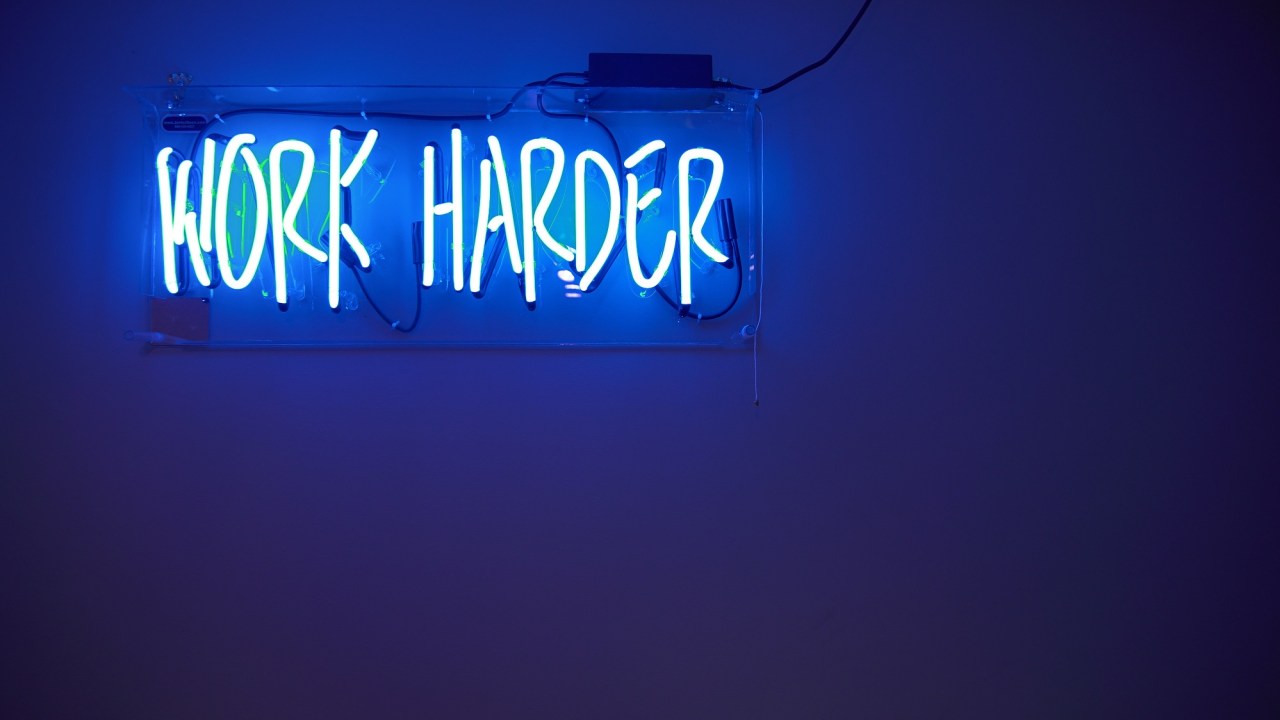
This article originally appeared in the January/February issue of Museum magazine.
Who could have foreseen—just two decades ago—that museums would one day employ game designers, digitization specialists, or social media managers? New positions are now emerging as museums strive to reach new audiences, deepen visitor engagement, and adopt more inclusive practices. Museum magazine spoke to several colleagues with (currently) uncommon job titles.
Meredith Martin Gregory, Special Education and Access Coordinator, New York Transit Museum
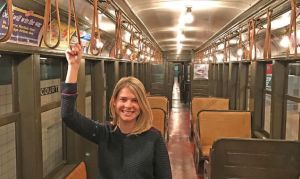
Meredith Martin Gregory has worked at some of the most well-known museums in the nation—the Whitney Museum of American Art and the Art Institute of Chicago—and has further honed her skills at the Chicago Children’s Museum and the Austin Museum of Art, and by teaching art to children on the autism spectrum.
Tell us about your role at the museum.
I ensure that we are welcoming to people with disabilities. I think about the accessibility of the physical space, staff training, programming, and how best to serve school and adult groups. Collaborating cross-departmentally is an important part of my job. I serve as a resource for staff members who are working toward inclusive practices. I also perform outreach to the disability community through resource fairs for families and meetings with disability service providers, and I form relationships with teachers and administrators at local schools.
What prompted the museum to create this role?
There was high demand from our visitors to offer programming and resources for people with disabilities. After establishing the need to hire a museum accessibility professional, it was a two-year process to obtain funding and start the job search before I was hired.
What has been the most rewarding thing about serving in this role?
I’ve seen a change in staff mentality around accessibility and inclusion practices. My colleagues are not only proud of the programming we offer for people with disabilities but are interested in how accessibility affects their own work as well. This change is a direct result of staff trainings led by myself and disability consultants as well as involving staff in program successes. For example, I will send the curatorial team a photo of someone in a wheelchair enjoying the latest exhibit, and I will share an e-mail from a parent of a child with a disability who had a good experience at the museum. This reinforces the positive effect that our efforts have on the visitor experience.
What has been the response to these efforts?
Since the creation of this position, we have seen grant funding increase significantly for accessibility initiatives at the museum. We also received national recognition for our access programs. In 2016, one of our programs for children on the Autism spectrum (“Subway Sleuths”) won the AAM Award for Excellence in Programming and the National Arts and Humanities Youth Program Award, which has increased our visibility as a leader in museum accessibility. We have seen an increase of people who are blind or have low-vision visiting our museum because we now offer tactile tours. Lastly, we found that many of the resources we created for people with disabilities have benefited all visitors, such as our social narrative—which uses pictures to describe what to expect and how to appropriately behave during a visit—on our website. This can be helpful for anyone preparing for a visit. Accessibility makes a better experience for all visitors.
What steps can museums take to become more accessible?
After the Americans with Disabilities Act (ADA) was enacted in 1990, some museums hired an ADA coordinator to ensure compliance with the law. Today, many museums have gone beyond this model and have hired professionals to not only think about the physical space but also how to build programming and spaces that are welcoming to all types of visitors. If a museum professional is interested in starting an accessibility initiative at their museum, connecting to an access consortium is a great way to start the process. I am on the steering committee of Museum Access Consortium in New York City, which brings museum accessibility professionals and disability advocates together to discuss disability issues in museums and hosts workshops on various accessibility topics. There are access consortiums all over the country; they even have resources for museum professionals at museumaccessconsortium.org.
Even if a museum is not able to fund a new position, there are low-cost ways to let visitors with disabilities know you are thinking about how to best accommodate their needs. For example, in addition to noting how the museum is accessible for people in wheelchairs, list the quietest hours in your museum for those who are sensitive to loud spaces and crowds. This is a great first step to welcoming people who have sensory needs (see nytransitmuseum.org/access as an example).
What inspires you in your work?
“True compassion is about not bruising the other person’s self-respect. That’s what I think, anyway.” (Naoki Higashida, The Reason I Jump)
Cecile Shellman, Diversity Catalyst, Carnegie Museums of Pittsburgh
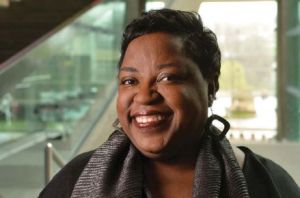
Cecile Shellman wanted to work in museums by the time she was nine years old. A former museum curator, she served as education outreach specialist at the John F. Kennedy Presidential Library and Museum in Boston and worked on the travelling exhibit “RACE: Are We So Different?” when it came to Pittsburgh. Cecile has served in the leadership of DivCom, AAM’s professional network on diversity, and as a member of the national program committee for the AAM Annual Meeting & MuseumExpo.
How would you describe your job?
I’m a diversity catalyst, not a diversity director or diversity supervisor. The “catalyze” verb is key. It is each museum staff member’s job to champion inclusion through a variety of intentional, systematic efforts. I help our employees find ways to embed principles of social inclusion into every aspect of our work—from exhibits to programs to employment. I also have responsibility for ensuring compliance with ADA regulations and providing training for working with staff and visitors with disabilities.
What has been the most rewarding thing about serving in this role?
I am constantly amazed and humbled by the small but significant ways in which this approach transforms the visitor and staff experiences for the better. We have held powerful workshops that encourage staff members to share personal stories. We encourage creative and compassionate problem solving that allows us to re-examine our biases and viewpoints. We are creating a community of even more thoughtful professionals whose museum work is enhanced by critical thinking about social justice. Many individuals and organizations within our community have expressed admiration for our efforts and have participated in some of the public programs that we have offered.
What steps can other museums take to replicate your work in the area of diversity?
It is more about creating a culture shift than it is about establishing a new position because everyone has to be involved at all levels. Other museums could replicate the model we are using, but more importantly, I think a diversity and inclusion approach should be tailored to each institution. It is imperative to build trust among the staff and with visitors, assess what you’re doing well and what needs to be improved, and only then apply best practices, introduce practical steps, and re-calibrate where necessary. Museums could get started by having a conversation at the board level or forming a board committee to explore diversity.
Where do you draw inspiration for your work?
Dr. Martin Luther King inspires me with the idea that “Human progress is neither automatic nor inevitable… Every step toward the goal of justice requires sacrifice, suffering, and struggle; the tireless exertions and passionate concern of dedicated individuals.”
Sebastian Chan, CXO (Chief Experience Officer), Australian Centre for the Moving Image
 Prior to joining the Australian Centre for the Moving Image in 2015, Seb Chan led the digital renewal of the Cooper Hewitt, Smithsonian Design Museum, where he served as director of digital and emerging media. Born in New Zealand, he is well known for his pioneering work in open access, mass collaboration, web metrics, and digital engagement in museums.
Prior to joining the Australian Centre for the Moving Image in 2015, Seb Chan led the digital renewal of the Cooper Hewitt, Smithsonian Design Museum, where he served as director of digital and emerging media. Born in New Zealand, he is well known for his pioneering work in open access, mass collaboration, web metrics, and digital engagement in museums.
What does your job entail?
The CXO role is a strategic design role positioned at the center of the museum. I work with the CEO and leadership team and drive a continuous focus on visitors (and users) across everything the museum does. Sometimes this means focusing on obvious things like wayfinding, architecture, exhibition design, and digital products, and sometimes on the back-of-house systems and processes. My position is design-oriented, using human-centered design principles and prototyping to devise and test new ideas working with teams across the museum.
What prompted the museum to create this role?
The museum’s new CEO was committed to evolving ACMI into Australia’s national museum of film, television, video games, digital culture, and art. It soon became clear that the future of ACMI lay in developing and delivering museum experiences that were more impactful and memorable—and better designed end-to-end—than was previously possible. The CXO role, by the nature of its work and focus, is about finding commonalities across the institutional silos and uniting them with a visitor focus. I’m impressed by how incredibly generous ACMI staff have been with rapid change—embracing new ways of doing things.
Do you have a favorite inspirational quote?
My former colleague Aaron Cope had this one from Antoine de Saint-Exupéry: “If you want to build a ship, don’t drum up the men to gather wood, divide the work, and give orders. Instead, teach them to yearn for the vast and endless sea.”
Working as (or with) a Contractor?
Kym Rice, director of the museum studies program at the George Washington University—which has graduated more than 1,000 students—says the jobs outlook has improved in recent years. But more positions are being contracted out, especially in the area of collections management as collections are being digitized. As this practice increases, she is adopting into her curriculum how to work as a contractor in a museum. AAM has some members-only resources to help contract employees—and employers—navigate this employment structure: aam-us.org/resources/resource-library/hr/contractors-and-consultants.
David Wolf (top), Phil Manning (middle), and Victoria Egerton (bottom), Scientists-in-Residence, Children’s Museum of Indianapolis
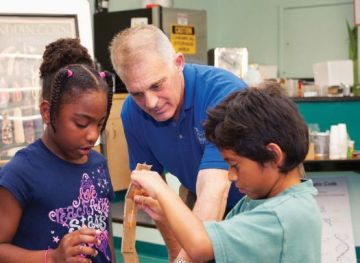
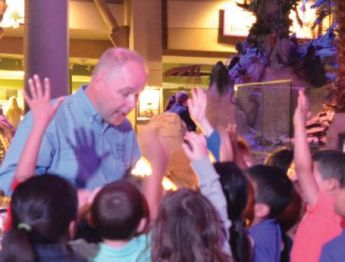
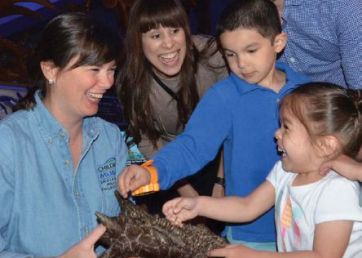
The scientist-in-residence program gives families an in-depth look at the life and work of a real scientist. The Children’s Museum of Indianapolis hosts a pair of paleontologists-in-residence (Dr. Phil Manning and Dr. Victoria Egerton) along with an astronaut-in-residence (Dr. David Wolf). Kimberly Harms, the museum’s director of media and public relations, also provided some background.
What does a scientist-in-residence do?
KH: Our scientists-in-residence are real-life professionals who are uniquely qualified to share expert insight into their fascinating fields of study. Their passion and experience are powerful tools in motivating and inspiring families to learn together.
PM: We share stories about the museum’s most prized fossils. We also lead specialized paleontology tours in the United States and abroad, helping the museum acquire specimens on loan from other institutions around the globe.
DW: I served as a mission specialist aboard three space shuttle flights and spent four months aboard the Russian space station Mir. I share stories and photographs of my work on the International Space Station in the museum’s newest exhibit “Beyond Spaceship Earth.”
What has been the reaction in your community?
KH: The expertise of our scientists-in-residence has attracted more engagement from school groups, exceptional networking through the scientific associations to which these individuals belong, opportunities to have new artifacts on display, and opportunities to be part of real scientific research teams.
What inspires you to do this work?
VE: One of my goals is to work especially with girls and help them realize that girls can make great strides in science. Hopefully, they’ll understand when they meet me and discover how I did it that they too can take those steps.
DW: I was involved with “Beyond Spaceship Earth” from the beginning. The whole exhibit and concept outstripped even our ambitious goals. The kids absolutely love it and they barely realize how much they are learning. Every time I peek into the exhibit, I get goosebumps.
Jeff Byers, Storyteller, Asian Art Museum
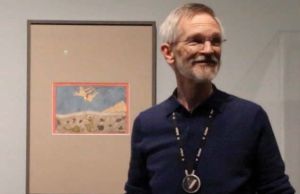
Naturally, Jeff Byers began our interview with a story. “When Jay Xu became director of the Asian Art Museum in 2008, he won me over instantly,” said Byers. “He assembled all the volunteers and told us, ‘You are as much a part of [my] team as the paid employees. You’re the ones the public sees first, and [therefore help] form their opinion of what the museum is like.’” The museum’s 55 volunteer storytellers—part of the education department—continue to enchant and inspire new visitors.
How do you describe the role of storyteller at the museum?
We invite people into the galleries, show them artworks, have them engage with the artworks, and tell them stories about the pieces and the culture that they come from. We might tell the story of the Buddha, a story about Vishnu, or one of the most beloved folktales, such as “How Ganesha Got His Elephant Head” and “Inch High Samurai.” For school groups, we tell a series of stories about the so-called “trickster” characters depicted in our collection. We also have a program featuring cultural heroes and she-roes featured in our collection.
What prompted the museum to develop this role?
The museum always had docents, but in the 1990s Elaine Connell, chair of the museum’s docent council and a community leader, conceived of a program to serve second- and third-grade students, an audience not reached by the museum. Two brave volunteers piloted the storyteller program; they learned some stories, and it blossomed from there. Then we saw even younger children participating, and now we welcome local preschool groups for special story time. [Docents continue offering tours from an art and art history perspective, while the storytellers tell the stories behind the characters featured in the art.]
What are some of your favorite stories to tell in your museum?
My favorites are “The Monk and the Samurai” and “Badger and the Magic Fan.” (To hear some of the stories told by Jeff and his colleagues, visit education.asianart.org/explore-resources/storyteller.)
How do museums inspire you?
Museums are the repository of everything that’s good about our culture. Stories can impart information, they can enliven your relationship to the artwork, and they are the way we remember things. If you’ve heard a story about something, you are much more likely to remember it.
How to Prepare for Your Future Job(s)
Be ready for whatever the next few decades will bring. Here are some resources to help you advance your career:
- AAM provides numerous resources to help you manage and advance your career, on topics such as career transitions, writing resumes, gaining experience, interviewing, mentorship, salary negotiation, and networking: aam-us.org/resources/careers/career-management
- A Life in Museums: Managing Your Museum Career, edited by Greg Stevens and Wendy Luke, is available in paperback and as an e-book from the AAM Press: bit.ly/ALifeinMuseums
- Find a graduate museum program: aam-us.org/resources/careers/museum-studies
- Find your local chapter of the National Emerging Museum Professionals Network: nationalempnetwork.org
- Register to participate in the Career Development Track at the 2017 AAM Annual Meeting & MuseumExpo in St. Louis, May 7–10: annualmeeting.aam-us.org
- Post jobs—or find one—on JobHQ: aam-us-jobs.careerwebsite.com
Gail Ravnitzky Silberglied is AAM vice president, government relations and communications, and senior editor of Museum magazine.







